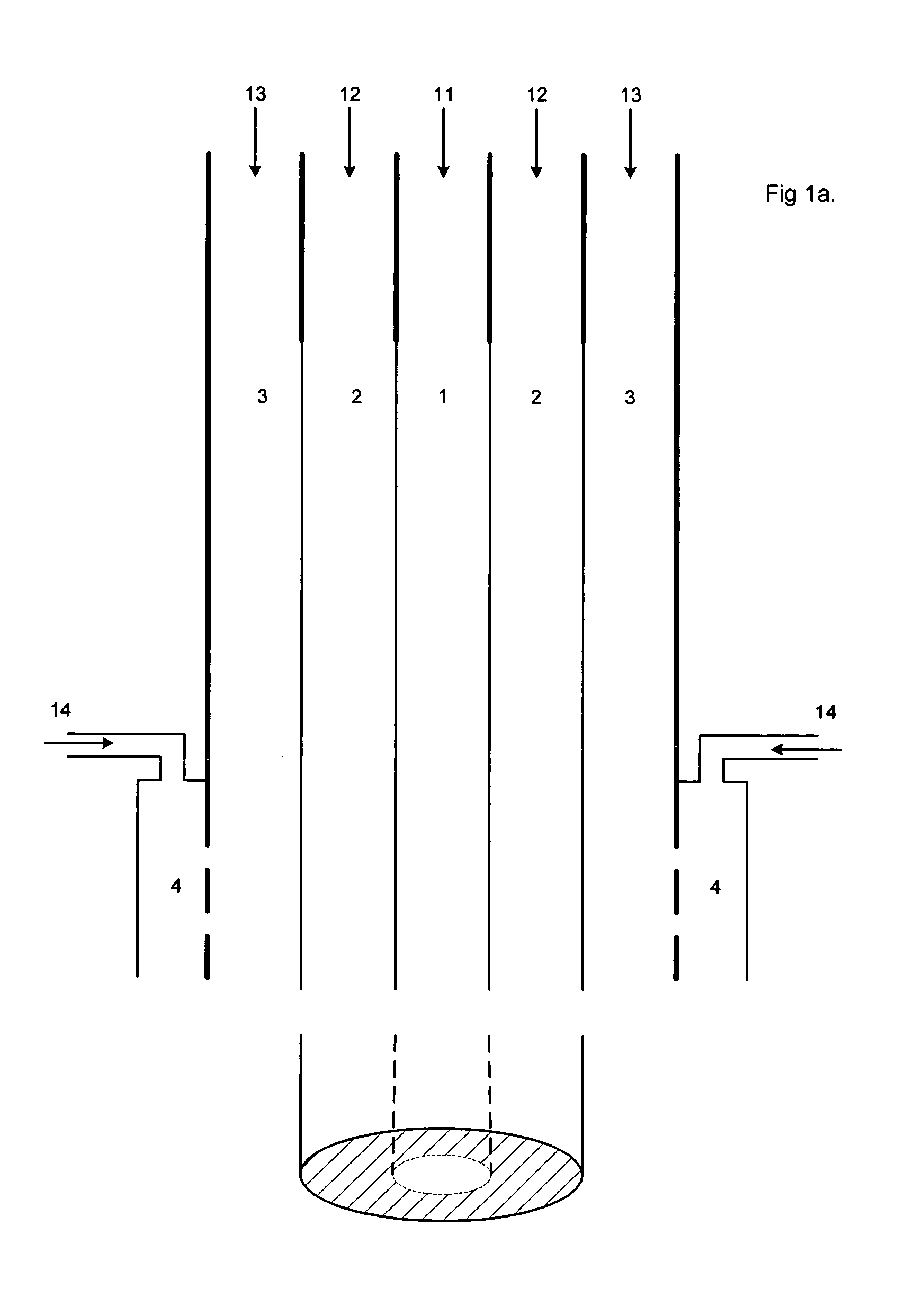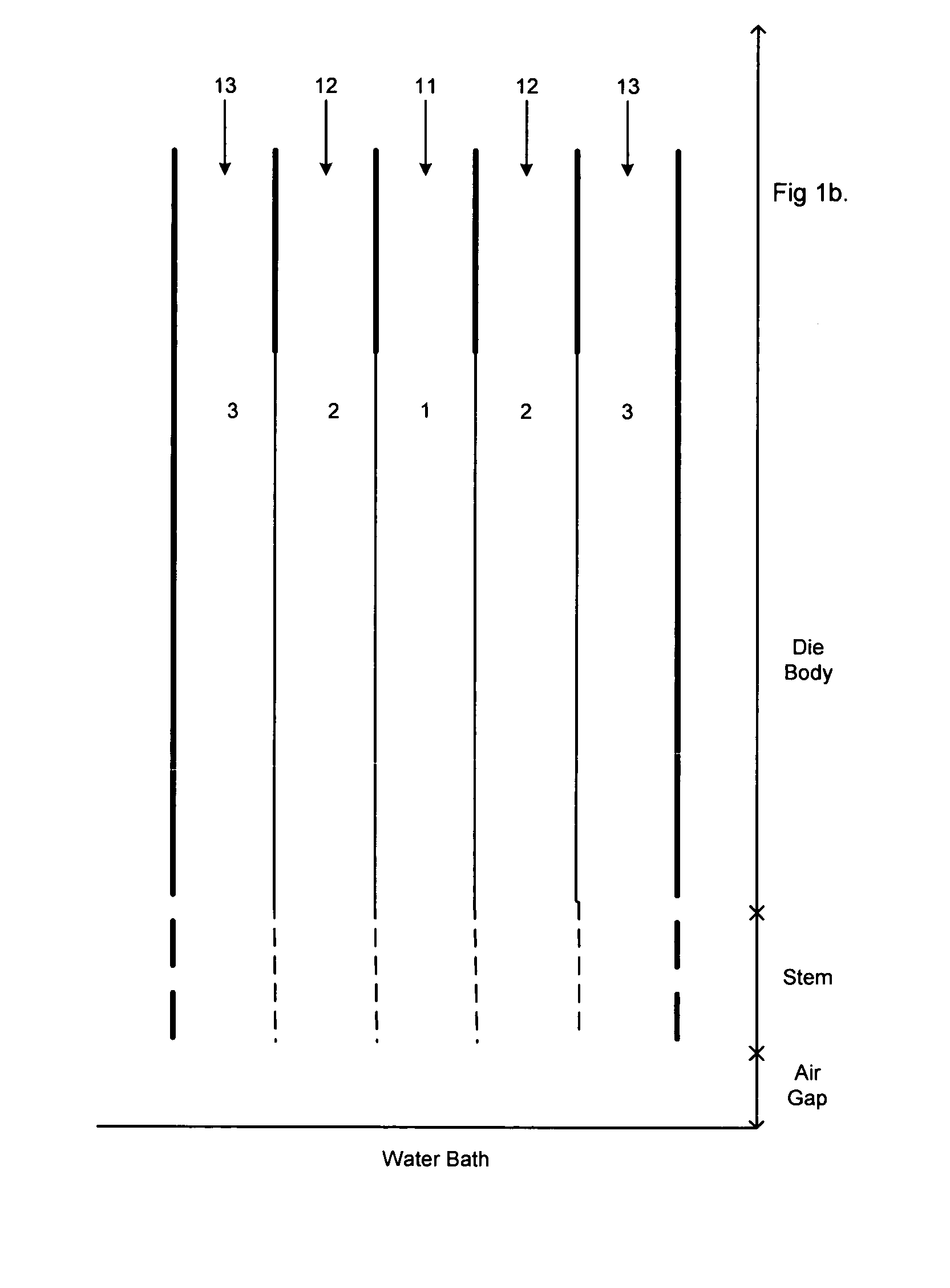Poly(ethylene chlorotrifluoroethylene) membranes
a technology of poly(ethylene chlorotrifluoroethylene) and membranes, which is applied in the direction of membranes, filtration separation, separation processes, etc., can solve the problems of high pressure needed, uneven wetness, and damage to membranes, so as to reduce the effect of human health and environment and low toxicity
- Summary
- Abstract
- Description
- Claims
- Application Information
AI Technical Summary
Benefits of technology
Problems solved by technology
Method used
Image
Examples
Embodiment Construction
[0100]The TIPS process is described in more detail in PCT AU94 / 00198 (WO 94 / 17204) AU 653528, the contents of which are incorporated herein by reference. The current method used to prepare the membranes of the present invention is described herein in simplified form.
[0101]In one preferred form of the invention, poly (ethylene chlorotrifluoroethylene) is formed as a hollow fibre. The poly (ethylene chlorotrifluoroethylene) is dissolved in a suitable solvent and then passed through an annular co-extrusion head.
[0102]There are two possible ways to conduct the methods of the present invention in relation to hollow fibres. One is via a coextrusion head having three concentric passageways, as shown in cross section FIG. 1b, the other is via a quadruple co-extrusion head having four concentric passageways is shown in cross section in FIG. 1a. The principle is broadly the same in both cases, except for the way the quench fluid is contacted with the fibre.
[0103]In both cases, the axial passa...
PUM
| Property | Measurement | Unit |
|---|---|---|
| break force | aaaaa | aaaaa |
| pressures | aaaaa | aaaaa |
| pore sizes | aaaaa | aaaaa |
Abstract
Description
Claims
Application Information
 Login to View More
Login to View More - R&D
- Intellectual Property
- Life Sciences
- Materials
- Tech Scout
- Unparalleled Data Quality
- Higher Quality Content
- 60% Fewer Hallucinations
Browse by: Latest US Patents, China's latest patents, Technical Efficacy Thesaurus, Application Domain, Technology Topic, Popular Technical Reports.
© 2025 PatSnap. All rights reserved.Legal|Privacy policy|Modern Slavery Act Transparency Statement|Sitemap|About US| Contact US: help@patsnap.com



